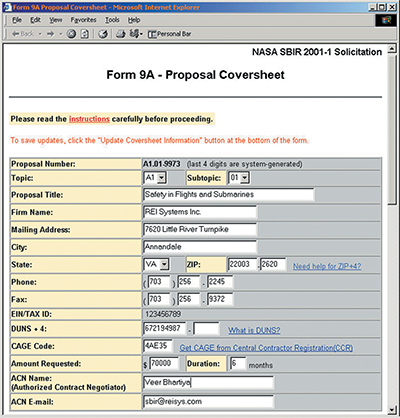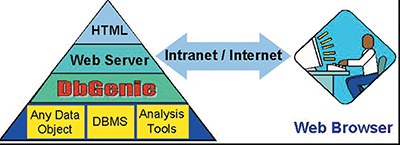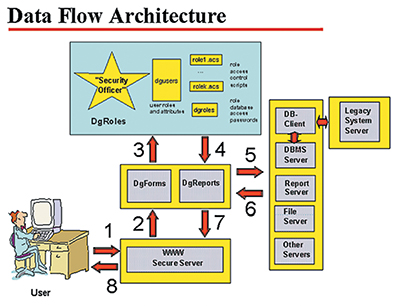The Paperless Solution
We are constantly moving closer to a paperless society as computers allow us to transmit data electronically. Through a Small Business Innovation Research (SBIR) contract from NASA's Goddard Space Flight Center, REI Systems, Inc., of Annandale, Virginia, brings our society one step closer to relief from the paper trail.
Led by Dr. Barry E. Jacobs, researchers from Goddard, in partnership with REI, developed a software solution that uses the Internet to eliminate the paperwork typically required to document and manage complex business processes. The data management solution, called Electronic Handbooks (EHBs), is presently used for the entire SBIR program processes at NASA. "The idea", said Jacobs, "is that processes are regarded as Internet 'plays' in which the characters of the play are physically distributed and communicate in the play through Electronic Handbooks."
The NASA SBIR application, which manages roughly 50 percent of all new NASA contracts, is one of the largest, end-to-end, completely electronic Internet uses in the Federal Government to date. Approximately two-thirds of all new technologies are developed by small businesses--so saving time and money is crucial. The EHB-based system is ideal for programs and projects whose users are geographically distributed and are involved in complex management processes and procedures. EHBs provide flexible access control and increased communications while maintaining security for systems of all sizes. Through Internet Protocol-based access, user authentication and user-based access restrictions, role-based access control, and encryption/decryption, EHBs provide the level of security required for confidential data transfer. EHBs contain electronic forms and menus, which can be used in real time to execute the described processes. There are only six basic elements needed for the creation of an EHB: database forms, report forms, e-mail forms, document templates, wizard packages, and instructions.
EHBs use standard word processors that generate ASCII HTML code to set up electronic forms that are viewed within a web browser. EHBs require no end-user software distribution, significantly reducing operating costs. Each interactive handbook simulates a hard-copy version containing chapters with descriptions of participants; roles in the online process. For example, by visiting a company's Internet address, customers log on to their specified area of that business's database and find all of the forms needed for a transaction, including instructions. Completed forms are sent to the intended recipient and the database is instantly updated. All submissions are archived and stored in a secure system, without the need for paperwork.
Almost any process requiring extensive paper documentation can be converted to an EHB performable online task. The EHB paradigm requires virtually no training and can be operated on any computer with Internet access. These characteristics make it an attractive package for users of almost all skill levels.
Time and cost savings associated with REI's Electronic Handbooks have stimulated demand for a variety of applications. With EHBs, we can achieve roughly a one-third reduction in the time required to process 2,000 SBIR proposals, while simultaneously achieving a significant increase in the quality and quantity of information that is available, said Paul Mexcur, NASA's SBIR Program Manager.
REI also offers the Database Genie, referred to as the DbGenie. It is a middleware solution that simplifies the creation of web database applications, such as EHBs. DbGenie uses a model designed on data specified in a pre-made HTML template. The DbGenie's scripts are driven by the template and are flexible with relation to modification and revision. Any database-oriented application for information gathering, exchange, and/or publishing that has a geographically-distributed user community and can exploit the expressive capabilities of the web is a potential candidate for Database Genie. This product is commercially available to the private sector and is another example of REI's advancement towards paperless applications.
EHBs have already proven their worth to NASA and other branches of the federal government including the Department of Justice, Department of the Interior, Department of Health and Human Services, and Community Development Financial Institutions. REI also continues to expand upon the vast commercial opportunities in the private sector. When considering the paperwork that goes into the fields of law, medicine, and insurance, REI's also highly praised technology can reduce mass quantities of paper waste, time, and cost while revolutionizing the face of data management.

Electronic Handbook users enter data into a user-friendly form, such as this one implemented in NASA’s SBIR proposal process.

DbGenie is a middleware solution that simplifies creation of web database applications.

Using the Electronic Handbooks (EHBs) software solution eliminates the paperwork usually required to document and manage complex business processes.













